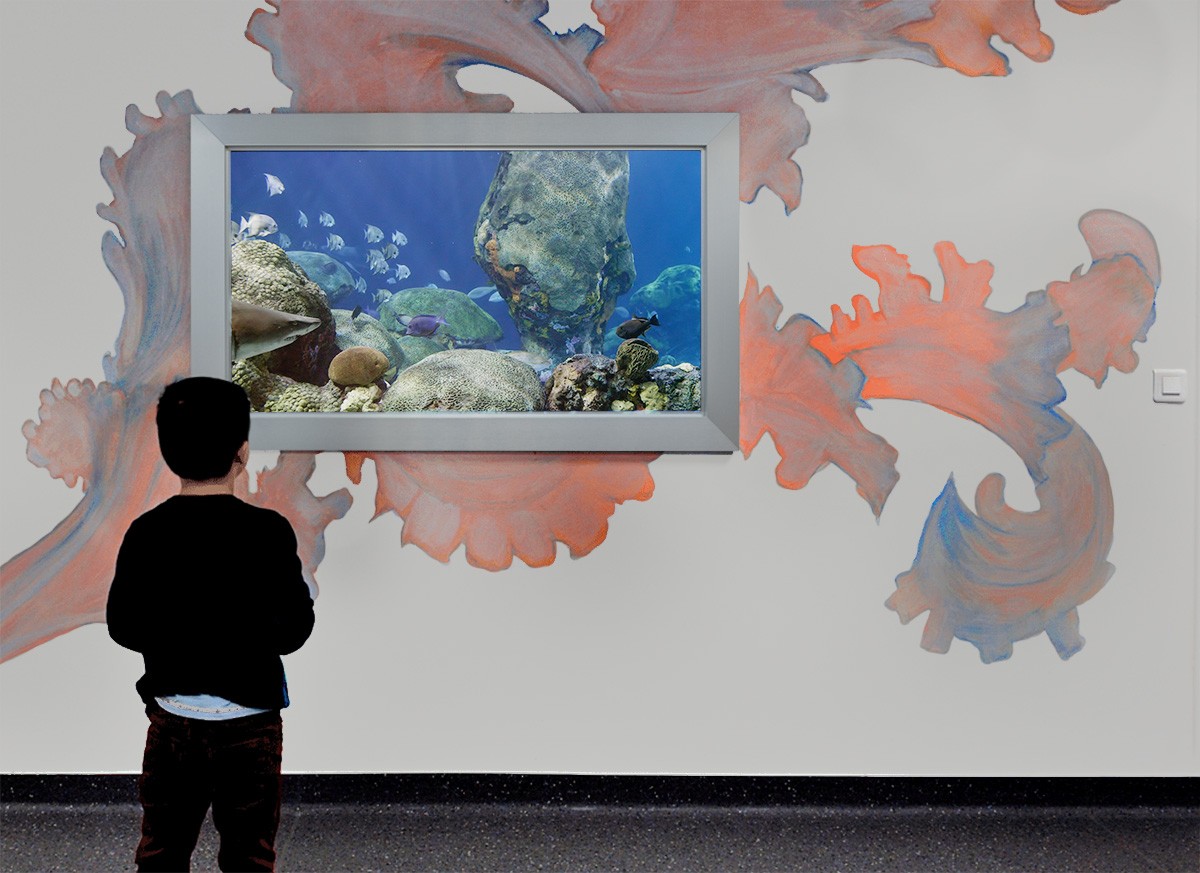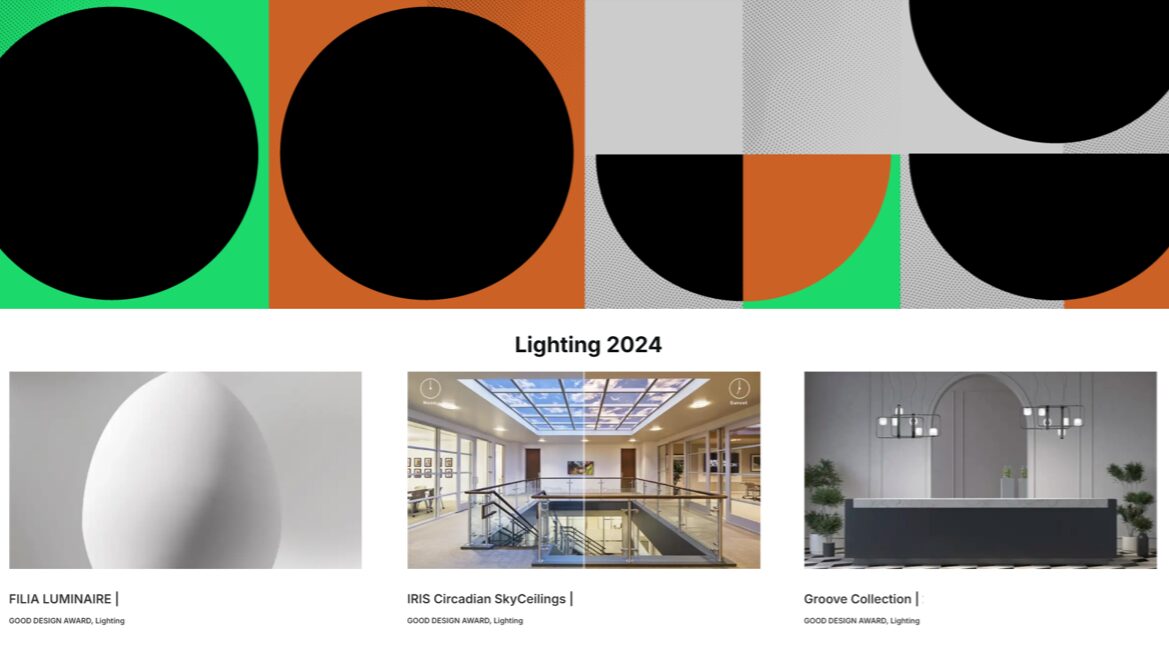The Department of Pediatric Orthopedics at Armand Trousseau Hospital in Paris published a pilot study on the effects of exposing healthy subjects to a gallery-quality virtual aquarium in a clinical setting. Given the growing interest in Animal Assisted Therapy (AAT) to mitigate patient distress without the need of analgesics or opioids, the study sought to determine the effect of Fish Aquarium AAT on pain perception, using a novel approach: a wall-recessed underwater illusion.
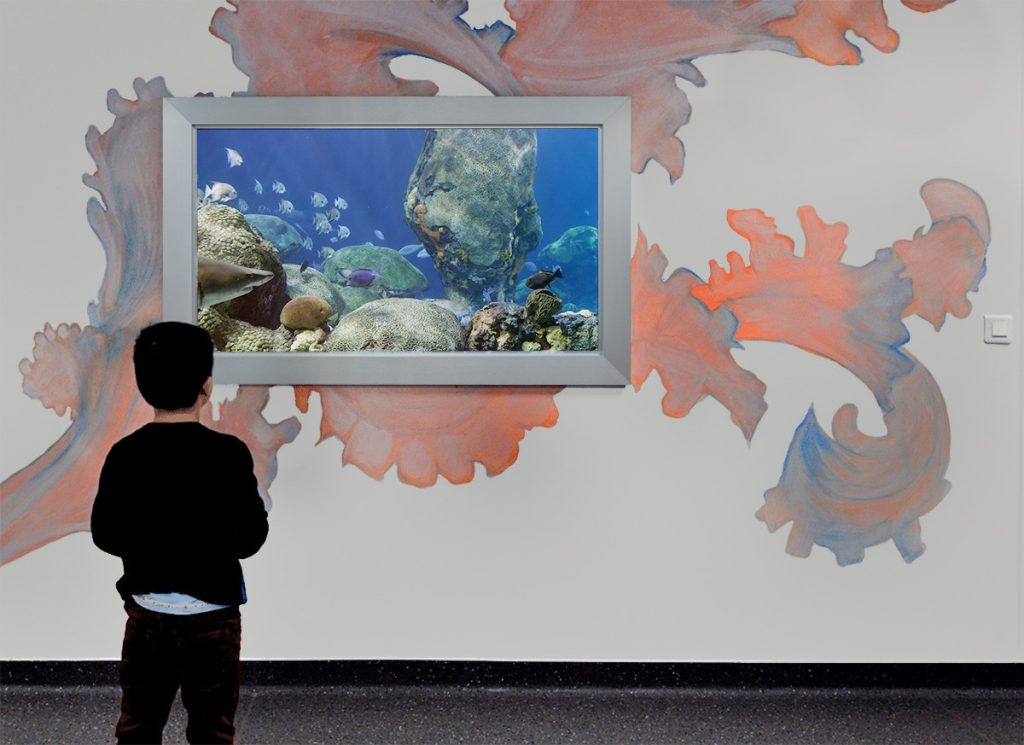
The study, published in The Orthopedist Journal (2022), exposed 41 volunteers to Sky Factory’s Digital Cinema eSea, a gallery-quality (4K – Ultra High Definition) aquarium designed to be embedded into the wall of the waiting room. Unlike broadcast content on a television screen, eSea’s self-enclosed 4K monitor system delivers the experience of a museum-quality portal into underwater environments, enhancing its therapeutic benefits.
eSea is equipped with a series of unedited, feature-length (40 minutes or longer) underwater scenes that replicate the point-of-view experienced at real aquariums. For the study, the team at Armand Trousseau Hospital selected the Philippine Coral Reef scene, which features a rich variety of tropical fish and coral species.
Volunteers (mean age 25.2 years) were randomly assigned to the control or experimental groups and minimum pain thresholds were established for each subject using a Pain Matcher, an electrical stimulation device (Cefar Medical AB) that provides constant current stimulation despite variable skin resistance.
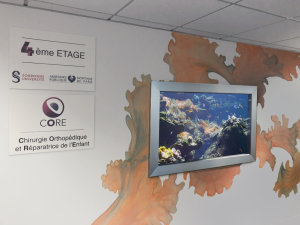
Participants were instructed to hold the device’s electrodes between their left hand’s thumb and index finger, receiving pulses at a frequency of 10 Hz and amplitude of 10 mA. The measurements were taken before exposure to the digital aquarium and repeated at the 5 minute, 10 minute, 20 minute, and 30 minute mark during continuous contemplation at a distance between 0.5 and 1.5 meters from the virtual aquarium. The control group was exposed to a blank wall during the same intervals of continuous contemplation.
Findings
The research team analyzed the data, evaluating statistical differences in pain thresholds according to gender and across all exposure durations. Table 1 shows the minimum and maximum pain threshold values in both the control and experimental groups based on exposure duration to the eSea window, plus the average of these values and their standard deviation. Analysis of the data revealed a trend towards increasing pain thresholds in relation to exposure time to the virtual aquarium (Figure 3).
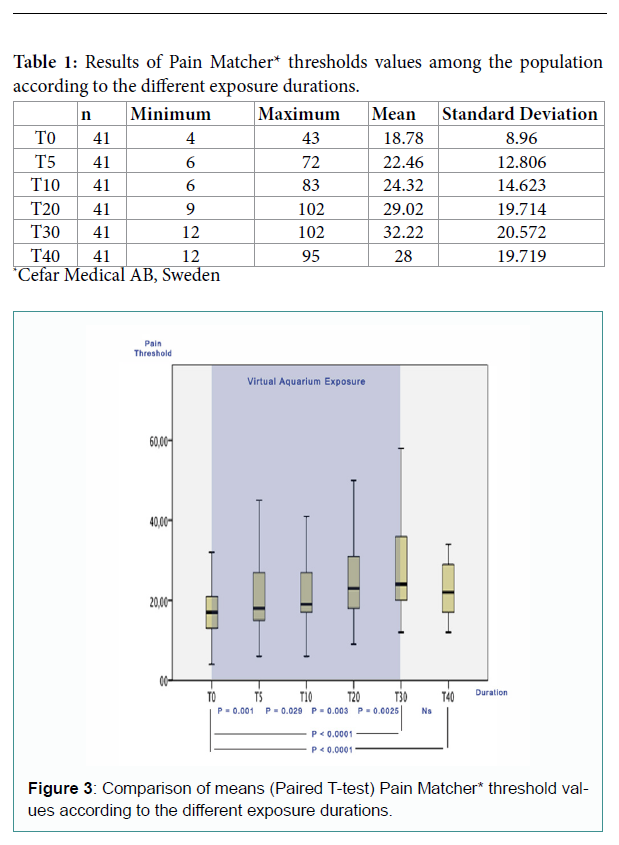
Dr. Vialle, Principal Investigator, noted that in pediatric practice, non-pharmacological interventions are becoming increasingly essential to pain management. Nurses can implement these methods independently, enhancing the patient experience for children and their families. He also noted that non-pharmacological methods are relatively inexpensive, do not have any side effects, and also provide positive outcomes for clinical staff. An attractive workplace with biophilic features like sea life imbues the space with life-affirming qualities.
A review of the literature found that biophilic design installations like eSea increase the nociceptive threshold, which allows moderate invasive and painful medical procedures like vein puncture, to be carried out with less fear and apprehension, particularly in pediatric patients.
The team at Armand Trousseau Hospital has incorporated Fish Aquarium AAT into their patient care protocol using this wall embedded illusory aquarium. Children and parents are asked to watch the underwater environments depicted on the Digital Cinema eSea window for 10 to 20 minutes before venous punctures to reduce anxiety, as well as raise their perceived pain threshold.

